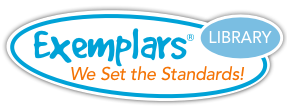Grade 4 - Multiplying and Dividing Whole Numbers Unit
Standards covered:
- 4.4 Number and operations
-
4.4B
Determine products of a number and 10 or 100 using properties of operations and place value understandings.
-
4.4C
Represent the product of 2 two-digit numbers using arrays, area models, or equations, including perfect squares through 15 by 15.
-
4.4D
Use strategies and algorithms, including the standard algorithm, to multiply up to a four-digit number by a one-digit number and to multiply a two-digit number by a two-digit number. Strategies may include mental math, partial products, and the commutative, associative, and distributive properties.
-
4.4E
Represent the quotient of up to a four-digit whole number divided by a one-digit whole number using arrays, area models, or equations.
-
4.4F
Use strategies and algorithms, including the standard algorithm, to divide up to a four-digit dividend by a one-digit divisor.
-
4.4G
Round to the nearest 10, 100, or 1,000 or use compatible numbers to estimate solutions involving whole numbers.
-
4.4H
Solve with fluency one- and two-step problems involving multiplication and division, including interpreting remainders.
The Multiplying and Dividing Whole Numbers Unit involves using patterns and place value to develop strategies to multiply and divide whole numbers. Questions to answer may include:
- How are models useful for representing the processes of multiplication and division?
- How are the properties of place value (additive, multiplicative, base-ten & positional) useful in developing efficient procedures for multiplying and dividing whole numbers?
- How can mental math, rounding, and/or the use of compatible numbers help to determine whether the solution to a multiplication or division problem is reasonable?
Summative Assessment Task
Students determine how many pencils Mrs. P will need to order for next year's class.
Instructional Tasks/Formative Assessments
Students determine how how much money the soccer team will raise selling sport posters.
Students determine how many small and large bags of stickers need to be sold to earn $20.00 to buy two games.
Students determine if four children can share the money in Grandfather's wallet equally.
Given a number of jelly beans in a bowl, students determine how to share the jelly beans among three friends equally.

The N/A classification refers to TEKS Standards that cannot be assessed through problem solving.
For this reason, tasks have not been included for these particular standards.
K.7A K.7B K.9B K.9C K.9D